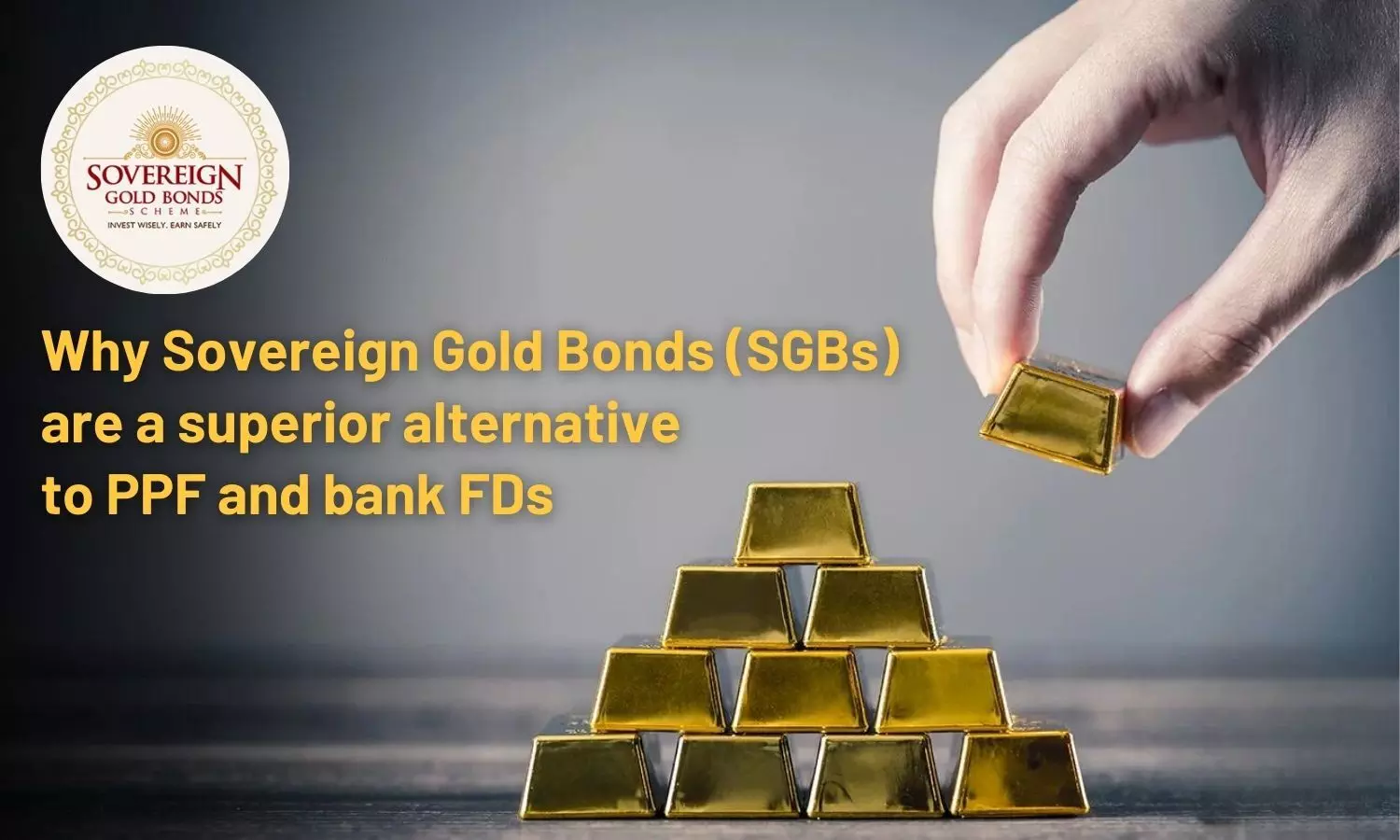Why Sovereign Gold Bonds (SGBs) are a superior alternative to PPF and bank FDs
Discover why Sovereign Gold Bonds (SGBs) stand out as a compelling investment choice compared to PPF and bank fixed deposits.
Why Sovereign Gold Bonds (SGBs) are a superior alternative to PPF and bank FDs

When it comes to secure investment options in India, three popular choices stand out: Sovereign Gold Bonds (SGB), Public Provident Fund (PPF), and bank fixed deposits (FDs). Each of these options is known for its stability and long-term benefits, but investors often find it challenging to decide which one to choose. While PPF and FDs have traditionally been favoured by conservative investors, SGBs have emerged as a compelling alternative that deserves serious consideration.
Understanding Sovereign Gold Bonds (SGBs)
Sovereign Gold Bonds are issued by the Reserve Bank of India (RBI) on behalf of the Government of India. These bonds are denominated in grams of gold, with a minimum investment of just 1 gram. What sets SGBs apart is that they offer an annual interest rate of 2.50%, paid semi-annually, in addition to the potential appreciation in gold prices. The bonds have a maturity period of eight years, with an exit option available after the fifth year.
Why SGBs Could Be a Better Choice Than PPF and FDs
SGBs offer several advantages over traditional investment avenues like PPF and FDs, especially for those with a long-term investment horizon. Here's why:
1. Inflation Hedge: Unlike PPF and FDs, the value of SGBs is linked to the price of gold, which historically tends to rise in response to inflation. This makes SGBs a robust hedge against inflation, preserving the purchasing power of your investment over time.
2. Tax Benefits: One of the most significant advantages of SGBs is the tax exemption on capital gains if the bonds are held until maturity. Additionally, the interest earned on SGBs is taxable, but the capital gains on redemption are entirely tax-free, making them more attractive compared to FDs where the interest is fully taxable.
3. Guaranteed Returns: SGBs offer a fixed annual interest rate of 2.50% on top of the appreciation in gold prices. This assured return provides a layer of security that is absent in gold ETFs or mutual funds, which do not offer any interest.
4. Safety and Sovereign Backing: Being backed by the Government of India and issued by the RBI, SGBs carry minimal risk. The security and credibility of these bonds are higher than that of fixed deposits, which, despite being considered safe, carry a risk of default if the bank faces financial difficulties.
Comparing with PPF
Public Provident Fund (PPF) is another popular long-term investment option, known for its guaranteed returns and tax benefits. However, there are some limitations:
1. Long Lock-In Period: PPF has a lock-in period of 15 years, which might not be suitable for investors who require liquidity before that period. In contrast, SGBs offer an option to exit after five years.
2. Interest Rate Variability: The interest rate on PPF is subject to change every quarter, as determined by the government. This variability can affect long-term returns, whereas the interest on SGBs is fixed.
3. Contribution Limit: The maximum annual contribution to a PPF account is capped at ₹1.5 lakh. This limit may be restrictive for investors looking to allocate more funds to secure, long-term instruments. SGBs do not have such a restriction, allowing investors to invest as much as they are comfortable with.
Comparing with Fixed Deposits
Bank fixed deposits are a go-to option for risk-averse investors, but they have their drawbacks:
1. Returns May Not Outpace Inflation: The interest rates on FDs often fail to keep up with inflation, leading to a decrease in the real value of your savings over time. SGBs, on the other hand, have the potential for capital appreciation along with the rise in gold prices.
2. Taxation: Interest earned on FDs is fully taxable, which can significantly reduce the effective return. In contrast, SGBs offer tax-free capital gains on maturity.
3. Fixed Returns: FDs offer a fixed rate of return, which can be lower than the returns on SGBs, especially when gold prices are on an upward trend.
SGBs After the LTCG Rule Change
The attractiveness of SGBs has increased further after the withdrawal of the Long-Term Capital Gains (LTCG) benefit from gold ETFs and gold mutual funds, effective from April 1, 2023. With this change, SGBs now stand out as the only gold investment option that offers both an assured return and tax-free capital gains, making them a superior choice for investors seeking both stability and growth.
For investors who primarily consider PPF and FDs for their long-term investments, Sovereign Gold Bonds present an attractive alternative that should not be overlooked. With their combination of inflation protection, tax benefits, and guaranteed returns, SGBs are well-suited for those looking to enhance their portfolio's stability and growth potential. By including SGBs in your investment strategy, you can enjoy the benefits of gold without the hassles of physical storage, while also securing your financial future.

